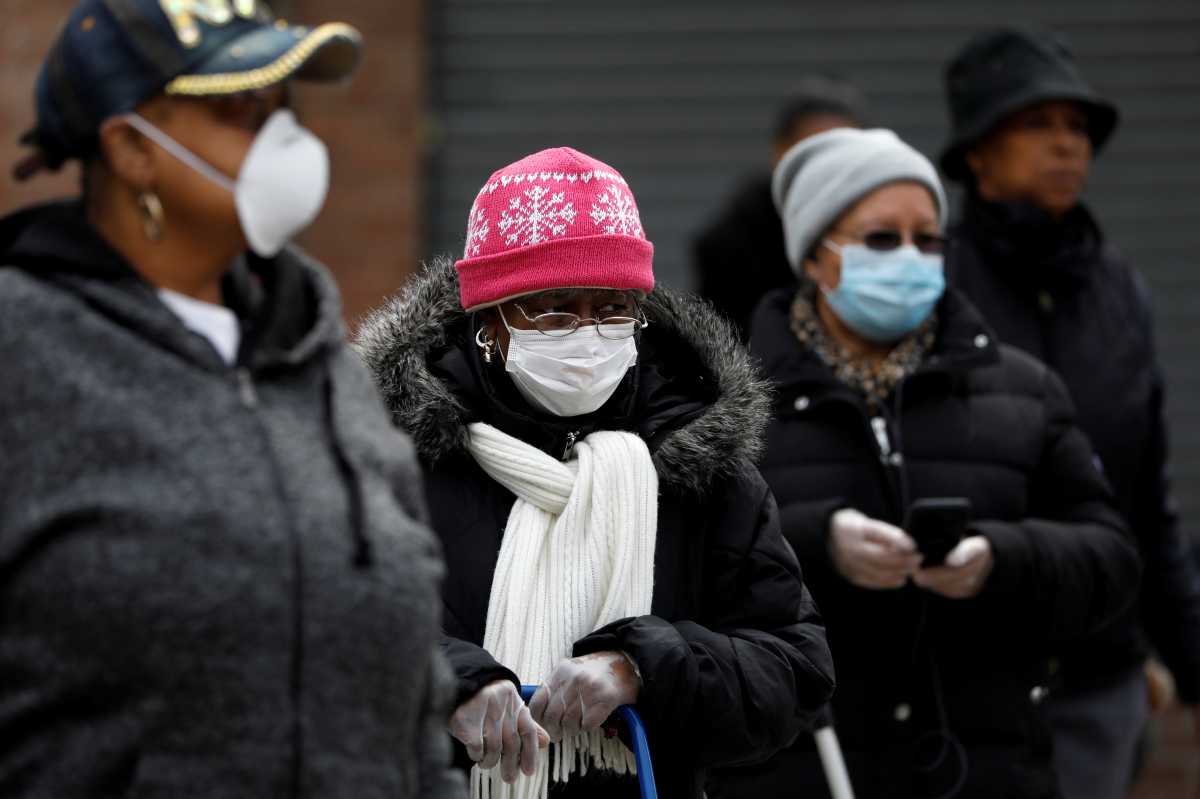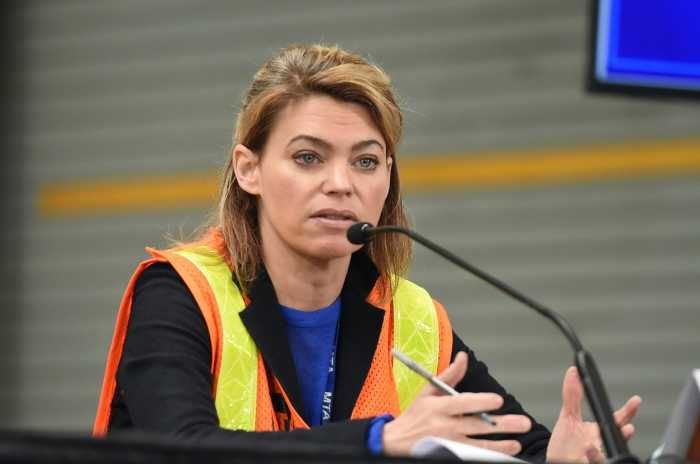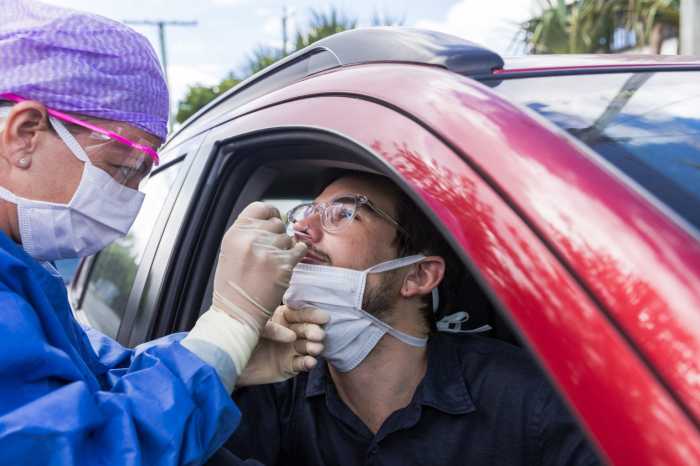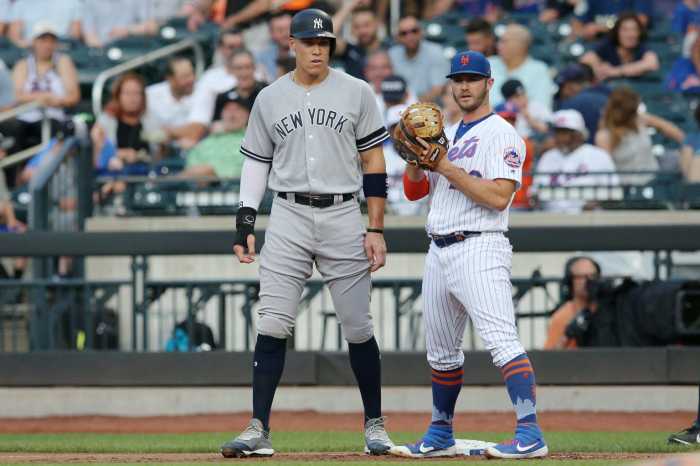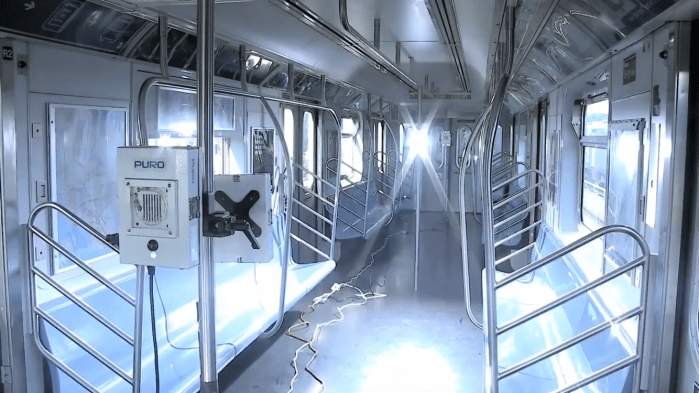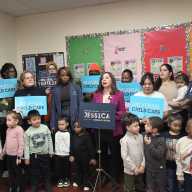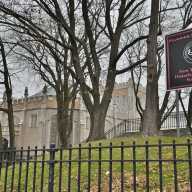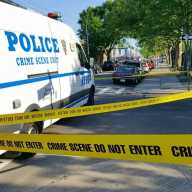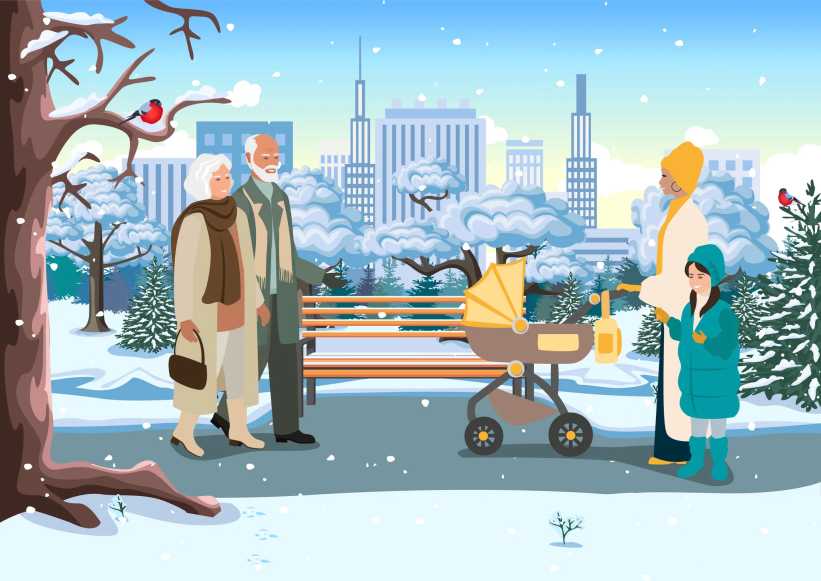Non-essential businesses and schools will be ordered closed this week in nine Brooklyn and Queens ZIP codes where COVID-19 cases have surged over the past week, Mayor Bill de Blasio announced Sunday.
The plan still requires state approval, and de Blasio said the city is working actively with the Cuomo administration to move it forward. The city wants to enact the plan this Wednesday, Oct. 7, and it would reinstate for these areas many of the “PAUSE” initiatives enacted in March as the pandemic took hold of New York.
The nine ZIP codes have seen daily COVID-19 positivity rates above 3% for at least seven consecutive days — a threshold that, de Blasio said Sunday, requires the city to act boldly to prevent the clusters from growing into another widespread outbreak.
“It will be very difficult for those who live in these ZIP codes in all these communities,” the mayor acknowledged. “But it is necessary to stop the spread of the coronavirus in these communities and beyond. We have to keep the overall low positivity level in the rest of the city.”
Six of the affected ZIP codes are in Southern Brooklyn — an area home to more than a half-million New Yorkers. The area includes the neighborhoods of Borough Park (11219), Gravesend/Homecrest (11223), Midwood (11230), Bensonhurst/Mapleton (11204), Flatlands/Midwood (11210) and Gerritsen Beach/Homecrest/Sheepshead Bay (11229).
Two areas of Queens also impacted include Far Rockaway/Edgere (11691) and a Central Queens cluster in the areas of Kew Gardens (11415) and Kew Gardens Hills/Pomonok (11367).
These ZIP codes have seen positivity rates between 3% and 9%. The city has flooded the communities with resources from masks and PPE to contact tracers, but in the end, de Blasio said, the efforts weren’t enough to turn the tide.
Should the state approve the action plan, the city would move to close all non-essential businesses, along with private and public schools, beginning on Oct. 7. All public schools in the affected areas would revert completely to remote learning from the blended model.
Daycare centers in the nine ZIP codes will also be ordered to close as of Wednesday.
Restaurants in the clusters, which struggled through the pandemic and were permitted to resume limited indoor dining just last week, will also be required to halt all dining services except for delivery or take-out options, de Blasio added.
“This is the strategy that worked for us in the spring and summer — limiting the activity in the community to stop the spread,” de Blasio said. “None of this is easy. It’s difficult, it’s challenging. It will require sacrifice. This will not be easy at all, but it’s something that we believe is necessary to keep this city from going backwards toward where were a number of months ago.”
To lift the pause, the ZIP codes must meet one of two thresholds: at least 14 days of less than 3% COVID-19 positivity on a 14-day average for at least 7 consecutive days, or at least 28 days with less than 3% COVID-19 positivity on a 14-day average at the pause’s conclusion.
In order to achieve that, the mayor stressed that residents in these areas need to double down on the basics of preventing COVID-19 infection: wear masks, practice social distancing, wash hands and remain home if they’re feeling ill.
The renewed pause order for the nine ZIP codes would not prevent residents from traveling to other parts of the city. The mayor, however, expressed confidence that the new pause order would encourage people to “double down all over the city” on following precautions to ensure the spread stops.
Starting the pause on Wednesday, pending state approval, affords businesses and schools time to prepare for closure. Monday and Tuesday would be regular school days in the nine affected ZIP codes under the “blended model” standard, de Blasio said. The affected schools would then go to full remote learning on Wednesday, which would continue for at least two weeks.
Schools Chancellor Richard Carranza said the Department of Education is ready to make the quick change.
“A lot of the logistics were already in the works,” Carranza said. “The good news is that we’ve already done this before, and our planning has always included the eventuality that we would one day need to pivot toward remote learning. We’re very much ready to go.”
‘Watch list’ restrictions
The city is also keeping an eye on 11 other Brooklyn and Queens ZIP codes around the city on a “watch list” where COVID-19 cases are ticking upward. De Blasio said the city’s also seeking the state’s permission to stop indoor dining, gyms and public pools from operating in these areas as of Wednesday to help bring COVID-19 rates down.
Those ZIP codes include Brooklyn’s Bedford-Stuyvesant/Clinton Hill/Fort Greene (11205), East Williamsburg/Williamsburg (11211/11249), Brighton Beach/Manhattan Beach/Sheepshead Bay (11235), Bergen Beach/Flatlands/Marine Park/Mill Basin (11234), Crown Heights East (11213) and Windsor Terrace/Kensington (11218).
The Queens communities of Rego Park (11374), Fresh Meadows/Hillcrest (11366), Hillcrest/Jamaica Estates/Jamaica Hills (11432) and Auburndale/Fresh Meadows/Pomonok/Utopia (11365) are also on the watch list.

